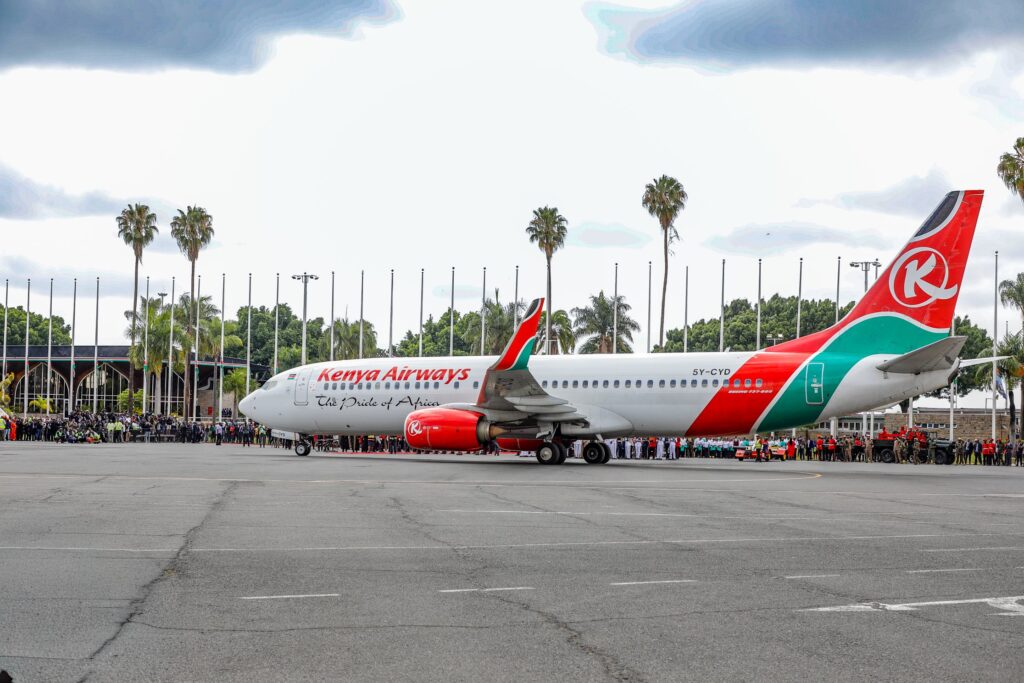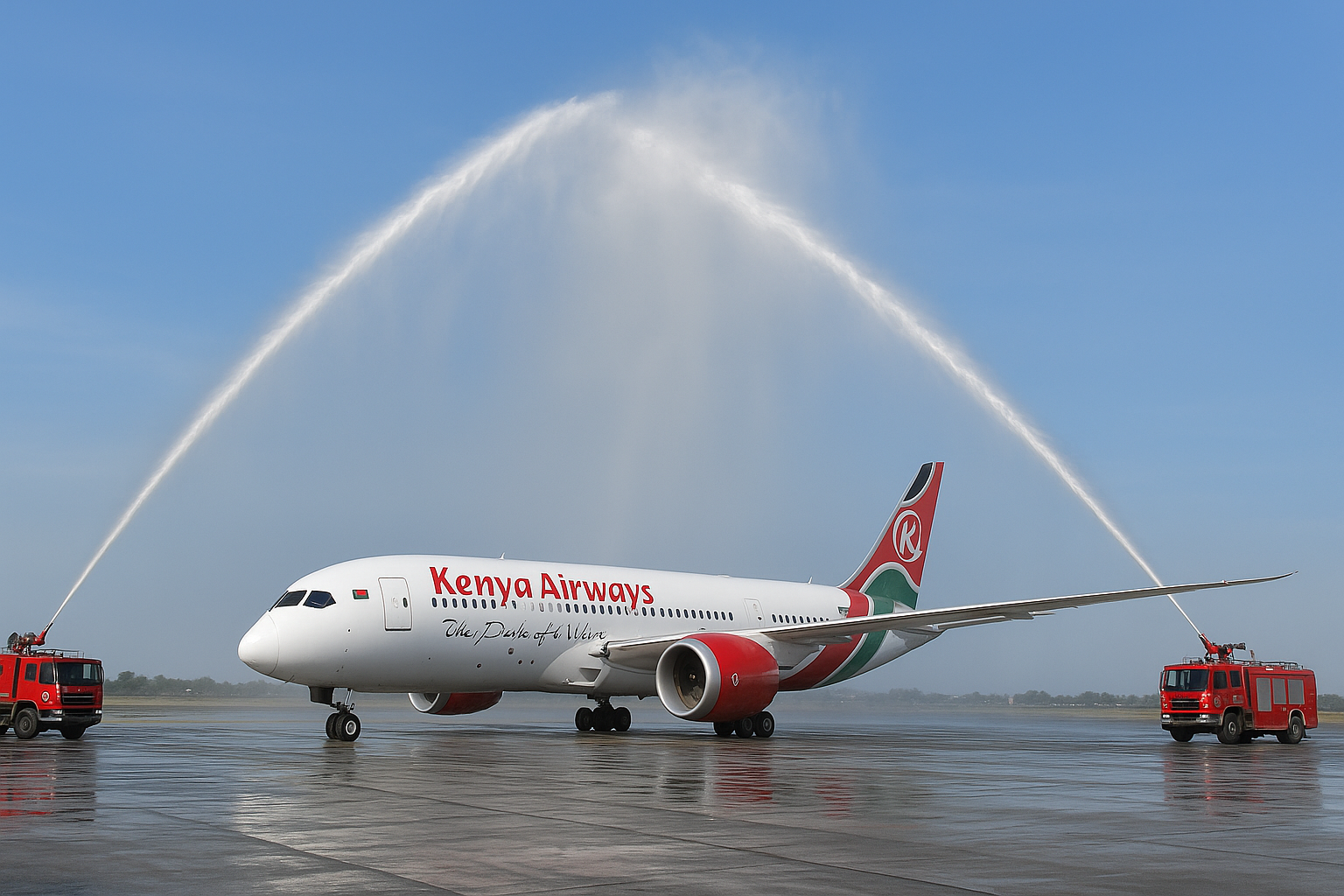Kenya Airways paid a moving tribute to the late retired Prime Minister Raila Amolo Odinga by renaming the flight that carried his body home from India RAO001, a symbolic gesture that captured the country’s deep respect for one of its most influential figures. As the national carrier’s Boeing touched down at Jomo Kenyatta International Airport, it received a ceremonial water salute in a display traditionally reserved for major state occasions and aviation milestones.


The gesture reflected more than national mourning. It underscored the essential role of air transport in Kenya’s story ,a sector that Odinga himself often recognised as a cornerstone of economic transformation and connectivity. Though best known for his role in democracy, governance, and political reforms, Odinga frequently called for investment in Kenya’s aviation infrastructure, arguing that an expanding economy required airports that could match global standards.
He repeatedly highlighted the potential of Jomo Kenyatta International Airport as an East African hub and urged policymakers to prioritise modernisation and expansion. In his view, a thriving aviation sector was vital for tourism, business travel, and trade. “If we are to compete globally, our gateways must reflect our ambition,” he once remarked during a development forum, emphasising that efficient air transport links were critical to Kenya’s integration into international markets.
Aviation officials and economists have echoed that sentiment, pointing to data that shows the sector’s vast economic footprint. According to the International Air Transport Association (IATA), air transport contributes about USD 3.3 billion to Kenya’s economy, accounting for 3.1 percent of the national GDP, and supports roughly 460,000 jobs. Of these, some 21,100 people are directly employed in airlines, airport operations, air navigation services, and aircraft manufacturing, generating USD 1.2 billion in output — around 1.1 percent of GDP.
Beyond direct employment, the industry has far-reaching effects. Aviation-related tourism contributes another USD 1.2 billion and 242,000 jobs, while international tourists arriving by air inject an estimated USD 1.9 billion annually into the local economy through hotels, restaurants, crafts, and transport services. In total, the IATA data reveal that nearly half a million Kenyan livelihoods are linked to aviation — from engineers and flight crews to tour guides and taxi operators.
The connection between air travel and the wider economy was evident in the days following Odinga’s passing. As Kenyans from across the country made plans to attend memorials in Nairobi and Kisumu, airlines increased flights and upgraded capacity on key domestic routes to meet surging demand. For a few days, Kenya’s airspace became a mirror of national emotion — a network binding the capital to the lakeside region Odinga called home.
Experts say Odinga’s consistent advocacy for better aviation infrastructure helped draw attention to a sector that often receives less public focus than roads or rail. His calls for upgrading JKIA and expanding regional airports aligned with Kenya’s Vision 2030 blueprint, which identifies efficient transport networks as a driver of long-term competitiveness. Odinga consistently emphasized that aviation was not merely about aircraft, but about Kenya’s place in the global arena. He championed the vision of transforming the country into a true regional hub, urging policymakers to think and plan with that ambition in mind.
The numbers appear to justify that vision. With nearly a fifth of the country’s tourism revenue dependent on air arrivals and the majority of business investments flowing through Nairobi’s airport, aviation continues to anchor Kenya’s reputation as East Africa’s commercial gateway. From the steady growth of Kenya Airways and other airlines within the country to the rising traffic at Moi and Kisumu international airports, the sector’s trajectory remains upward. A reflection of both economic resilience and strategic planning.
For many Kenyans, the image of KQ’s RAO001 flight gliding into the Nairobi skyline will linger as a moment of unity and pride. It was more than a state gesture; it was a vivid reminder of how air travel connects not only cities but the nation’s collective heart. In honouring Raila Odinga through the skies, the country also reaffirmed his long-held belief that connectivity, in infrastructure, ideas, and people — is the foundation of progress.
As Kenya looks to the future, the late leader’s vision for a modern aviation sector resonates with renewed relevance. The aircraft that bore his name for a day became a flying metaphor for the country he sought to build: forward-looking, connected to the world, and always in motion.
